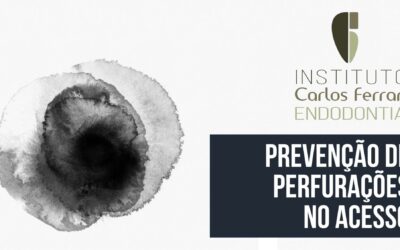Diagnóstico endodôntico . Aula sobre técnica de diagnóstico endodôntico
Anamnese Histórico do caso Exame Clínico Exame Radiográfico
In: Souza et al.. Concordância diagnóstica em Endodontia em clínicas odontológicas RGO, vol.59 no.3 Porto Alegre Jul./Set. 2011
Introdução
Pode-se conceituar diagnóstico como sendo o conhecimento de um estado mórbido obtido por meio de uma cuidadosa e criteriosa coleta de dados, procedimento este que se inicia com a anamnese que representa o segmento subjetivo do exame para obtenção de informações que possam auxiliar na definição do diagnóstico. Silva et al. afirmaram que nas alterações da polpa dentária humana, os informes necessários para o estabelecimento das suas condições patológicas ficam restritos à anamnese, exame clínico, testes de sensibilidade pulpar e avaliação radiográfica.
Segundo Ruiz o exame clínico inclui os dados objetivos colhidos pelo profissional, através de exames como palpação, percussão, inspeção e exploração. A palpação, a partir do tato e compressão ou preensão digital, fornece impressões sobre uma determinada área podendo definir forma, limites, consistência, modificações de textura, espessura, sensibilidade, volume, mobilidade, conteúdo, flutuação, temperatura e elasticidade. Sobre o teste de percussão , o mesmo não fornece indicação sobre a integridade do tecido pulpar, mas apresenta importância para se avaliar o grau de comprometimento dos tecidos periapicais e se existe inflamação no tecido periodontal, auxiliando, desta forma, no diagnóstico de patologias periapicais e/ou periodontais por intermédio da percussão dentária vertical ou horizontal, respectivamente.
Estrela afirmou que a inspeção inclui a observação visual, a inspeção física e o exame extra e intrabucal dos tecidos moles, que determinam vários aspectos das condições teciduais e condições das estruturas dentárias, constituindo-se em aspectos fundamentais a serem analisados, assim como a exploração constitui uma sequência da inspeção, em que se observa a presença de cavidades dentárias, bolsas periodontais, trajetos fistulosos, fraturas coronárias e radiculares. Os testes de vitalidade (sensibilidade) pulpar são utilizados como recursos suplementares do exame físico para se estabelecer diagnóstico diferencial das odontalgias e para se avaliar a vitalidade ou não da polpa dentária em diversas circunstâncias. A despeito de fornecerem respostas subjetivas, constituem grande recurso na determinação de um correto diagnóstico. Dentre os testes comumente empregados, destacam-se aqueles realizados por meio de estimulação térmica da superfície do dente a ser investigado. Além de fácil execução, são confiáveis e possuem baixo custo para realização e ainda, permitem a determinação do estado de irreversibilidade da polpa.
O teste mais aceito, atualmente, para determinação da vitalidade pulpar é aquele realizado por resfriamento da superfície dentária, havendo maneiras diferentes de se produzir tal efeito, tais como o uso de bastão de gelo, neve carbônica e gases refrigerante. Segundo Cohen, a dor produzida por estímulos térmicos, calor ou frio, é um dos sintomas mais comuns presentes nos casos de pulpites. Quando há comprometimento pulpar reversível, a resposta dolorosa ao frio é mais intensa, desaparecendo assim que o estímulo é removido.
Na possibilidade de se responder positivamente ao teste realizado com o calor e a dor se mantiver após a remoção do estímulo, a polpa está irreversivelmente inflamada. Se não houver resposta, a necrose já poderá estar instalada. O exame radiográfico, quando devidamente associado ao exame clínico do paciente, auxilia na localização e identificação do problema relatado pelo paciente, obtendo-se, assim, o diagnóstico e a orientação para o devido planejamento e tratamento.
Segundo Ruiz, através do exame clínico podem-se diagnosticar duas condições da polpa, a pulpite reversível e a irreversível, as quais possuem tratamentos e prognósticos distintos. A pulpite reversível é por definição uma leve alteração inflamatória da polpa, em fase inicial, em que a reparação tecidual advém uma vez removido o agente desencadeador do processo. Se os irritantes persistem ou aumentam, a inflamação pulpar torna-se de intensidade moderada à severa, o que caracteriza a pulpite irreversível, com ulterior necrose pulpar.
Quanto ao diagnóstico da pulpite reversível, Lopes & Siqueira Junior relataram que é usualmente assintomática, porém ao serem aplicados os recursos semiotécnicos o paciente pode sentir uma dor aguda, rápida, localizada e fugaz, cessando após a remoção do estímulo. Nos testes térmicos com o calor o paciente sente dor tardia a aplicação inicial do estímulo e no exame radiográfico, verifica-se a presença de lesões cariosas ou restaurações extensas, próximas à câmara pulpar.
Diagnóstico endodôntico





